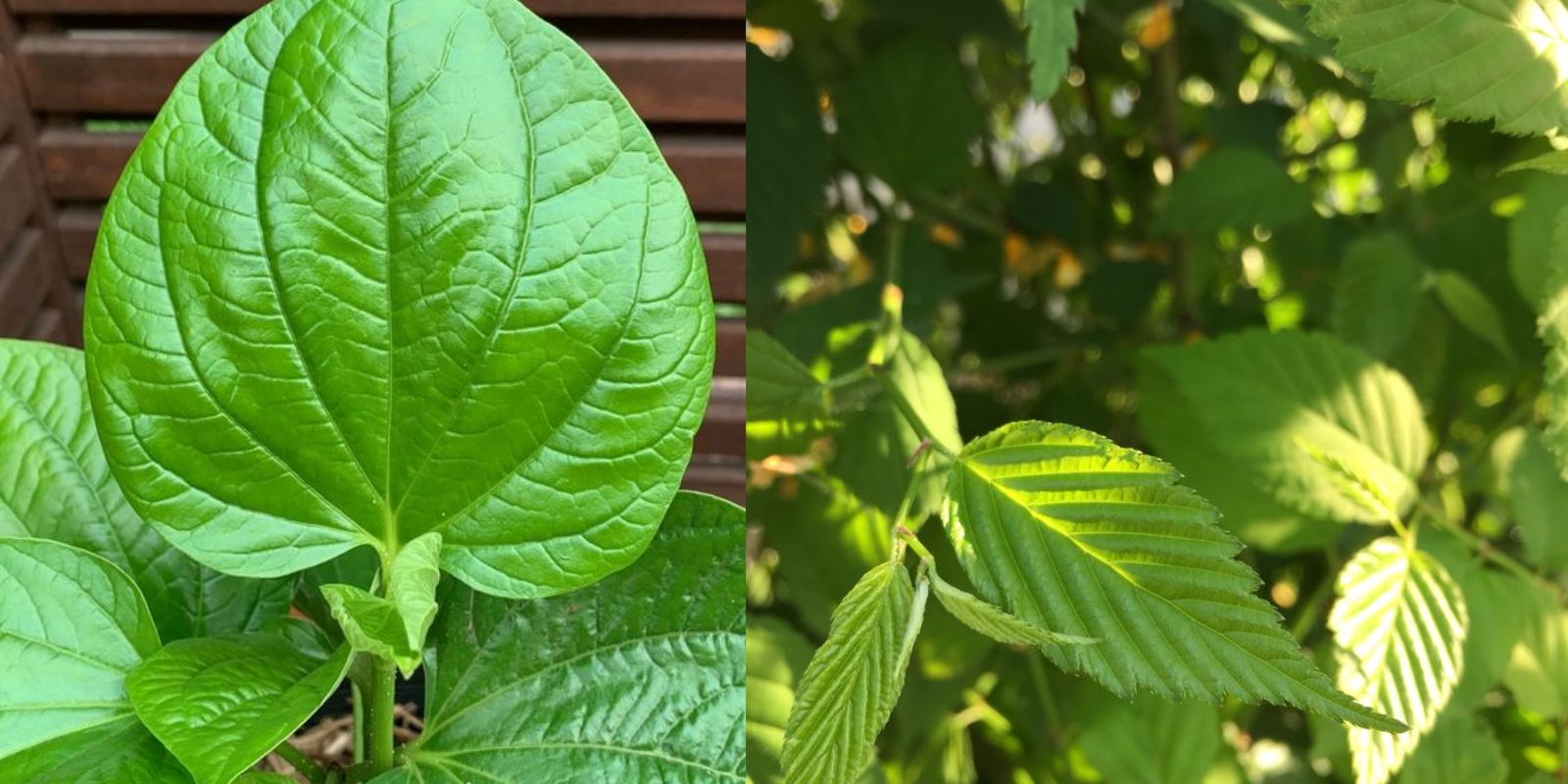Leaves are fundamental to plant life, serving as the primary sites for photosynthesis and playing a crucial role in a plant’s overall health and growth. Understanding the various leaf types and their structures can provide valuable insights into plant biology and improve your gardening practices. This article explores the different leaf types found in plants, covering their shapes, margins, venation, and arrangements, and helps you identify and appreciate the diversity in the plant world.
1. Leaf Shapes
Leaf shape is one of the most noticeable and diverse characteristics in plants. Various shapes can be found across different species, each adapted to the plant’s environment and needs.
- Ovate: Oval-shaped leaves are broadest in the middle and taper towards both ends. This shape is common in many garden plants, including holly and magnolia. Ovate leaves often help in maximizing the surface area for photosynthesis while minimizing water loss.
- Lanceolate: Lance-shaped leaves are narrow and elongated with a wider base and tapering tip. This shape is seen in plants like asparagus and some types of ferns. Lanceolate leaves are often adapted to reduce water loss and manage exposure to sunlight.
- Cordate: Heart-shaped leaves have a rounded base with a notch at the top, resembling a heart. Examples include the heartleaf philodendron and many species of violets. Cordate leaves can provide an efficient structure for capturing light while maintaining structural stability.
- Elliptical: Elliptical leaves are shaped like an elongated oval, with a consistent width throughout. This shape is found in plants like the eucalyptus tree. Elliptical leaves often help in minimizing wind resistance and optimizing light capture.
- Circular: Circular leaves are almost round in shape, providing a large surface area. Examples include the lotus and certain types of water lilies. Circular leaves are adapted to maximize light absorption and are often found in aquatic plants.
2. Leaf Margins
The edges or margins of leaves can vary widely and serve different functions in plants. Understanding these margins can help in identifying plant species and understanding their adaptations.
- Smooth (Entire): Smooth margins have no teeth or lobes and are even along the edge. Plants with smooth margins include the rubber tree and some types of holly. Smooth margins reduce the risk of pest damage and can help in maintaining water balance.
- Serrated: Serrated margins have saw-like teeth along the edge. Examples include the rose and the nettle. Serrated margins can help deter herbivores and may also aid in capturing moisture from rain.
- Lobed: Lobed margins have deep indentations or projections, often giving a more jagged appearance. Plants like oak trees and maple trees exhibit lobed leaves. Lobed margins can increase the leaf surface area and help with water retention and light capture.
- Crenate: Crenate margins are rounded and wavy. Examples include the strawberry and some types of cabbage. Crenate margins can reduce wind resistance and provide an aesthetic appeal to the plant.
- Undulate: Undulate margins have a wavy or rippled edge. Plants like the kale and certain types of ferns feature undulate leaves. This margin type can help in optimizing light capture and reducing water loss.
3. Leaf Venation
Leaf venation refers to the pattern of veins in a leaf, which is crucial for nutrient transport and structural support. There are several primary venation patterns:
- Parallel: In parallel venation, veins run parallel to each other from the base to the tip of the leaf. This pattern is common in monocots such as grasses and lilies. Parallel venation supports the leaf structure and facilitates efficient nutrient transport.
- Pinnate: Pinnate venation features a central midrib with secondary veins branching out like a feather. Examples include the rose and the oak. Pinnate venation provides a robust structure for the leaf and helps in distributing nutrients.
- Palmate: Palmate venation has several primary veins that radiate out from a single point at the base of the leaf. Plants like the maple and the horse chestnut exhibit this pattern. Palmate venation allows for a wide distribution of nutrients and supports the leaf structure.
- Reticulate: Reticulate venation, or net-like venation, features a complex network of interconnecting veins. This pattern is typical in dicots like the tomato and the bean plant. Reticulate venation helps in maximizing nutrient distribution and providing structural support.
4. Leaf Arrangement
Leaf arrangement refers to the pattern in which leaves are attached to the stem or branch. Different arrangements can impact light capture, airflow, and plant stability.
- Alternate: In alternate arrangement, leaves are positioned singly along the stem, alternating sides. Examples include the birch tree and many herbaceous plants. Alternate arrangement allows for maximum light capture and minimizes competition for space.
- Opposite: Opposite arrangement has pairs of leaves directly across from each other on the stem. Plants like the maple and the mint exhibit this pattern. Opposite arrangement can provide better structural support and balance.
- Whorled: Whorled arrangement features three or more leaves radiating from a single point on the stem. Examples include the oleander and some types of water lilies. Whorled arrangement can help in maximizing light capture and improving plant stability.
- Rosette: In a rosette arrangement, leaves form a circular pattern around the base of the plant. Plants like the dandelion and lettuce exhibit this arrangement. Rosette leaves are often adapted for close-growing environments and can help in protecting the plant’s central stem.
Conclusion
Understanding the different leaf types in plants provides valuable insights into plant adaptation, function, and diversity. By examining leaf shapes, margins, venation, and arrangements, you can gain a deeper appreciation for the complexity of plant life and enhance your gardening knowledge. Whether you’re identifying new plants in your garden or simply exploring the natural world, recognizing and understanding these leaf types can enrich your botanical experience.
Call to Action
Have you noticed unique leaf types in your garden or during nature walks? Share your observations or questions about different leaf types in the comments below, and let’s explore the fascinating world of plant leaves together!

